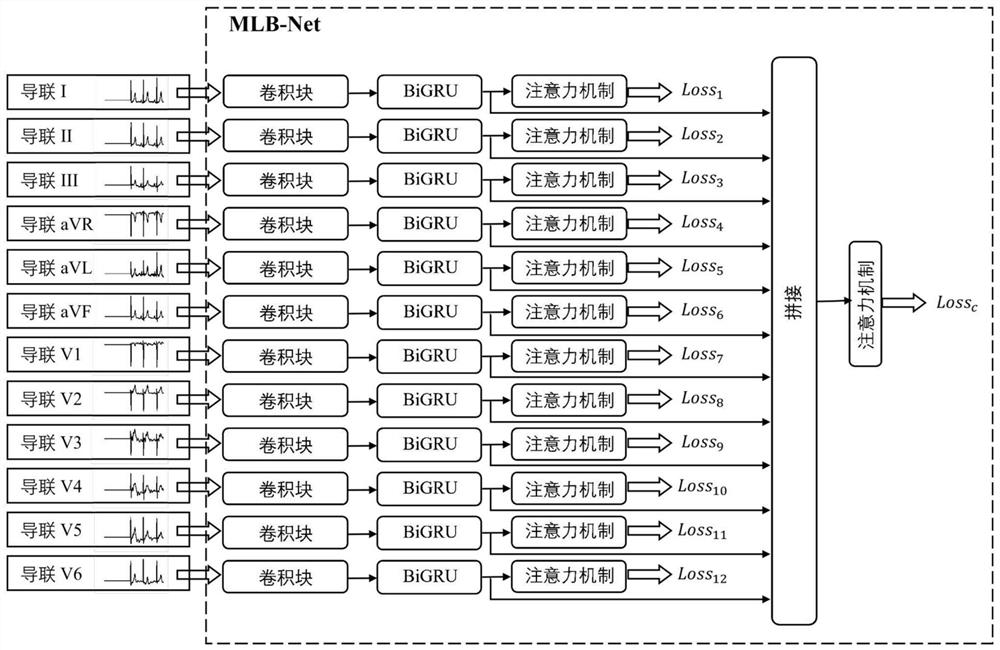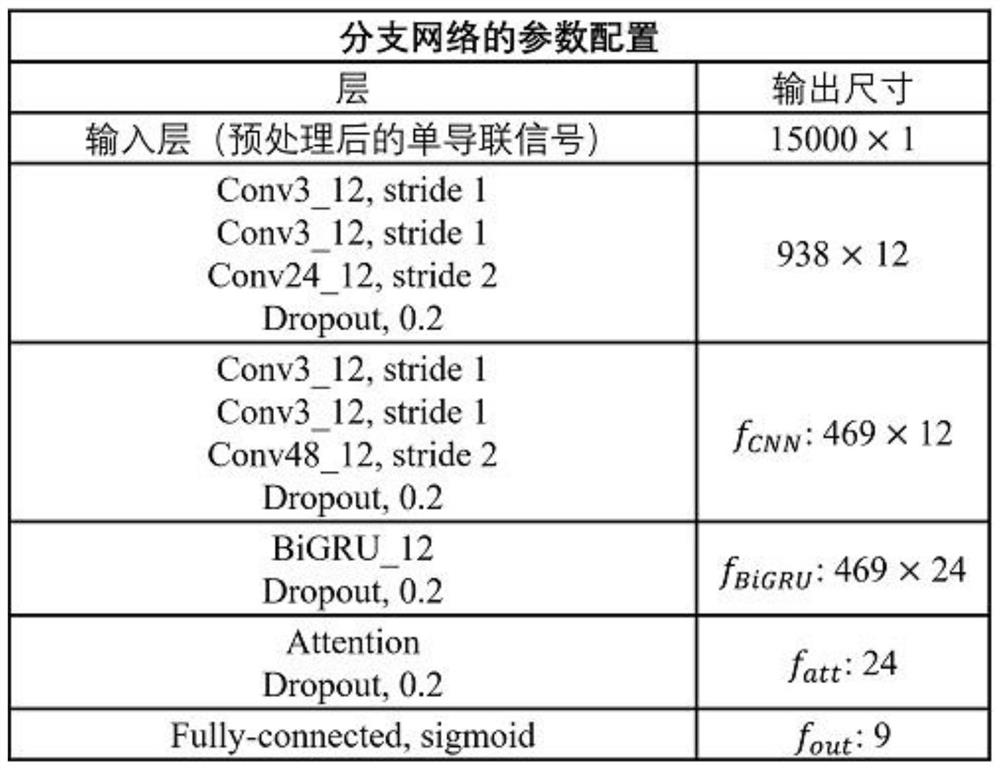Arrhythmia classification method based on multilead information fusion
A technology of arrhythmia and classification methods, applied in the field of medical signal processing, can solve the problems of lack of integrity and diversity of multi-lead ECG signals, and achieve high classification performance
- Summary
- Abstract
- Description
- Claims
- Application Information
AI Technical Summary
Problems solved by technology
Method used
Image
Examples
Embodiment Construction
[0054] In this embodiment, a method for classifying arrhythmia based on multi-lead information fusion includes the following steps:
[0055] Step 1. Obtain the original ECG signal and its corresponding label y, and down-sample the original ECG signal to obtain the sampled ECG signal; perform clipping or zero padding on the sampled ECG signal to obtain the preprocessed ECG signal X , and the preprocessed ECG signal X contains d leads.
[0056] Step 1.1. Obtain the original ECG signal and its corresponding label required for the experiment from the public database of the China Physiological Signal Challenge (CPSC) 2018. The public database of CPSC 2018 provides 6877 12-lead ECG records with a time length ranging from 6 seconds to 60 seconds. Records were collected from 11 hospitals with a sampling rate of 500 Hz. These ECG records contained nine rhythm types, normal rhythm and eight arrhythmias, as shown in Table 1.
[0057] Table 1: Data distribution of CPSC2018 public datab...
PUM
 Login to View More
Login to View More Abstract
Description
Claims
Application Information
 Login to View More
Login to View More - R&D
- Intellectual Property
- Life Sciences
- Materials
- Tech Scout
- Unparalleled Data Quality
- Higher Quality Content
- 60% Fewer Hallucinations
Browse by: Latest US Patents, China's latest patents, Technical Efficacy Thesaurus, Application Domain, Technology Topic, Popular Technical Reports.
© 2025 PatSnap. All rights reserved.Legal|Privacy policy|Modern Slavery Act Transparency Statement|Sitemap|About US| Contact US: help@patsnap.com



